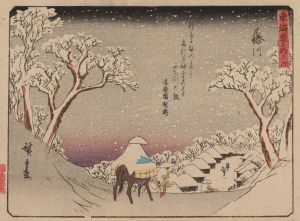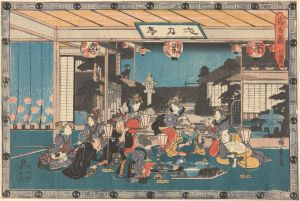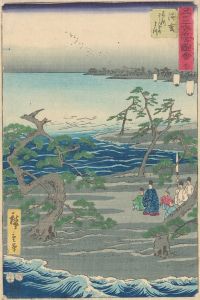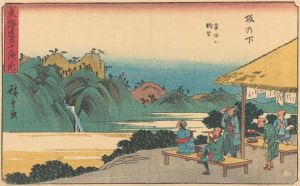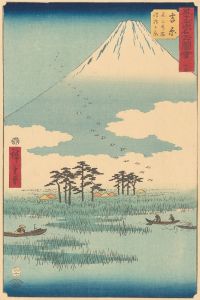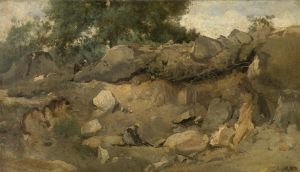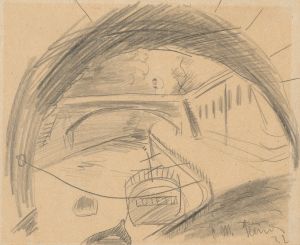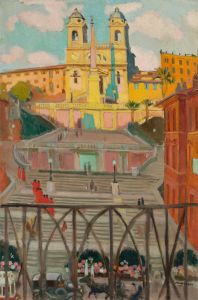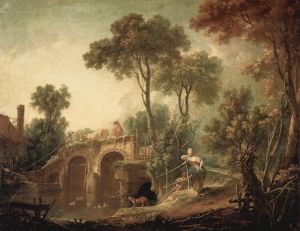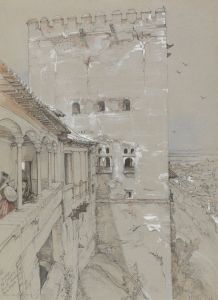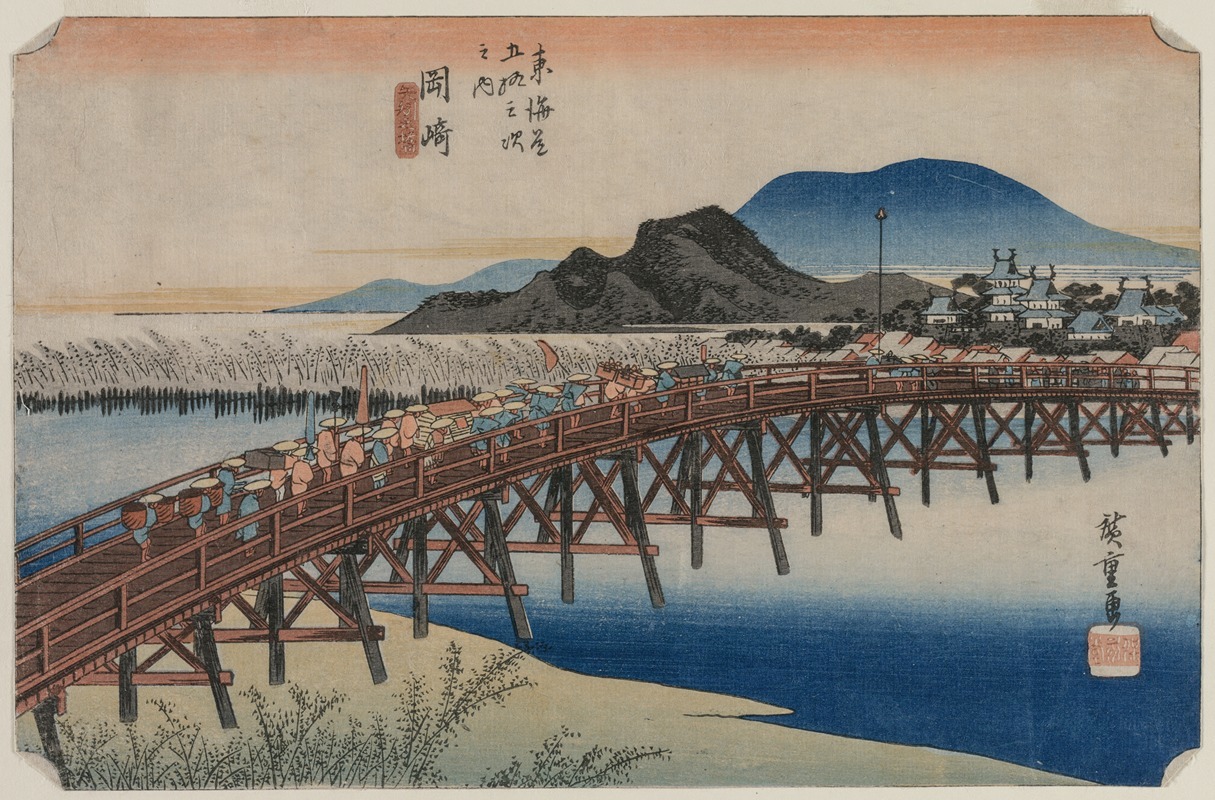
Yahagi Bridge at Okazaki , From the series Fifty-Three Stations of the Tokaido
A hand-painted replica of Andō Hiroshige’s masterpiece Yahagi Bridge at Okazaki , From the series Fifty-Three Stations of the Tokaido, meticulously crafted by professional artists to capture the true essence of the original. Each piece is created with museum-quality canvas and rare mineral pigments, carefully painted by experienced artists with delicate brushstrokes and rich, layered colors to perfectly recreate the texture of the original artwork. Unlike machine-printed reproductions, this hand-painted version brings the painting to life, infused with the artist’s emotions and skill in every stroke. Whether for personal collection or home decoration, it instantly elevates the artistic atmosphere of any space.
Andō Hiroshige, a renowned Japanese ukiyo-e artist of the Edo period, created the series "Fifty-Three Stations of the Tokaido" (Tokaido Gojusan-tsugi no Uchi) between 1833 and 1834. This series is one of Hiroshige's most celebrated works and consists of 55 woodblock prints, each depicting a different station along the Tokaido, the main coastal route connecting Edo (modern-day Tokyo) to Kyoto. The series captures the diverse landscapes, cultural life, and daily activities of travelers along this important road.
One of the prints in this series is "Yahagi Bridge at Okazaki." This artwork illustrates the Yahagi Bridge, a significant landmark located in Okazaki, a city in present-day Aichi Prefecture. Okazaki was the 38th station on the Tokaido route, and it played a crucial role as a post town where travelers could rest and resupply during their journey.
In Hiroshige's depiction, the Yahagi Bridge is shown stretching across the Yahagi River. The composition of the print is notable for its dynamic portrayal of the bridge, which is bustling with activity. Travelers, including samurai, merchants, and peasants, are depicted crossing the bridge, highlighting the diversity of people who used the Tokaido. The bridge itself is an architectural feature of interest, constructed with wooden planks and supported by sturdy pillars, reflecting the engineering techniques of the time.
The background of the print features the serene landscape surrounding the Yahagi River. Hiroshige's use of perspective and color captures the tranquil beauty of the natural environment, with distant mountains and lush greenery framing the scene. The sky is often depicted with subtle gradations of color, suggesting the time of day and atmospheric conditions, a technique Hiroshige mastered to convey mood and setting.
Hiroshige's "Fifty-Three Stations of the Tokaido" series, including "Yahagi Bridge at Okazaki," is celebrated for its innovative use of perspective, composition, and color. The series had a significant impact on the development of landscape art in Japan and influenced Western artists, particularly the Impressionists, who admired Hiroshige's ability to capture fleeting moments and the essence of a scene.
The prints were produced using traditional ukiyo-e woodblock printing techniques, which involved the collaboration of the artist, carvers, and printers. Hiroshige's designs were meticulously carved into cherry wood blocks, and each color required a separate block. The prints were then hand-pressed onto paper, resulting in vibrant and detailed images.
"Yahagi Bridge at Okazaki" and the entire Tokaido series remain important cultural artifacts, offering insights into the travel, culture, and landscapes of Edo-period Japan. They continue to be studied and appreciated for their artistic merit and historical significance, reflecting Hiroshige's keen observation and artistic skill in capturing the essence of Japan's iconic Tokaido road.





